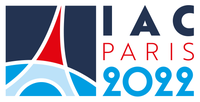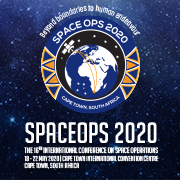›The 2nd Annual Space Traffic Management Conference “An Evolving Landscape”
The Commercial Space Operations Program and Applied Aviation Sciences Department of Embry-Riddle Aeronautical University’s College of Aviation, are pleased to announce the 2nd Annual Space Traffic Management Conference “An Evolving Landscape”. The conference will be held 12 – 13 November 2015 at Embry-Riddle’s Daytona Beach Campus in Florida.
This year we will build upon the success of last year’s conference. Participants brought the roadmap into focus, identifying and prioritizing issues. This year’s objective is to explore the next steps for collaborative, responsible, sustainable coordination of space traffic with other modalities.
To this end, we again invite papers of 4,500 to 6,000 words in length. Abstracts may be up to 250 words and must indicate the precise title of the paper, the area of interest, the author’s full name and affiliation, and complete contact information including an email address. The language of the conference is English.
Event timetable:
Abstract deadline 8 September 2015
Deadline for paper submission 30 September 2015
Deadline for presentations 21 October 2015
Conference 12-13 November 2015
We encourage papers encompassing the STM topics listed below. We are particularly interested in research and papers examining the role of human factors in space traffic management, the role of industry and industry’s needs and wants regarding traffic integration and coordination, and international initiatives and concerns. Papers espousing legal and policy perspectives regarding any of the topics discussed in this paragraph and listed below are welcome.
1. Access to and Return from Outer Space
Space Traffic Management Sustainment Strategy – Life Cycle Considerations
Unmanned Air Systems Integration into Commercial Space – User Needs vs. Policy Considerations
Integration of Air Traffic and Space Traffic Control Systems
Displays for Future Air/Space Traffic Control Systems
Communication Standards for Space Traffic
Suborbital and Orbital Planning and Sequencing
Traffic Flow Models for the NAS and Space Flight Penetrations
A Community of Practice for Spaceports
NextGen Roadmap for Space
Co-location of Aviation and Spaceflight Operations
Safety Aspects Including Continuing Development of Hazard Analysis
Commercial, Civil, and Military Range Safety Continuity
Security Issues Including Cyber
Range Technology Modernization
Issues Pertaining to the Area Above 60,000 feet
Traffic De-confliction Methods
The ICAO/OOSA Collaboration
2. Operations and Activities in Space
Space Traffic Situational Awareness
International Collaboration
Industry Initiatives
Spaceflight Emergency and Contingency Planning
Impacts of Space Debris Mitigation and Remediation on Effective STM
Impacts of Traffic upon Spectrum Management
The Business Case for Debris Remediation
Better Collision Predictors
3. Weather impacts: Meteorology and Space Weather
Space Weather Effects and Prognosis
Launch and Space Flight Meteorology
Orbital Debris and Space Weather Mitigation
Engineering Cost to Protect Against Weather
The role of Insurers in Providing Launch Weather Forecasting
Space Weather Services for Horizontal Launch Sites
Track this event on your Apple calendar














 United States
United States